Pay-per-click (PPC) is a great way to promote your business and reach new customers, however, it can be a bit confusing for those just getting started.
In this guide, we will cover:
- What is pay-per-click?
- PPC terms you’ll want to know
- How does PPC work?
- Best PPC Platforms
- Advantages and Disadvantages of pay-per-click advertising
- Differences between PPC and SEM
- Get started with PPC
- 8 steps to successfully launch a PPC campaign
What is pay-per-click?
PPC (pay-per-click) is an advertising model that uses sponsored listings and adverts to drive traffic to a website. This form of advertising is most closely associated with search engines like Google, however, PPC works with other marketing channels such as video ads on YouTube and visual ads through social media platforms.
Types of PPC
- Paid search marketing: the most common type of PPC advertising and the most common marketing technique which falls under SEM. This type of PPC is conducted solely through search engine platforms.
- Social media advertising: PPC ads on social media are very effective because it doesn’t require the customer to conduct a search to see your ad.
- Display marketing: these are the banners, images, or text ads within a website that are typically based on your previous searches.
- Affiliate marketing: A lot of brands use PPC marketing for affiliates, allowing them to earn money when users click on their individual profile or personal page.
Paid search Vs paid social: What should you be using?
Examples of PPC ads:
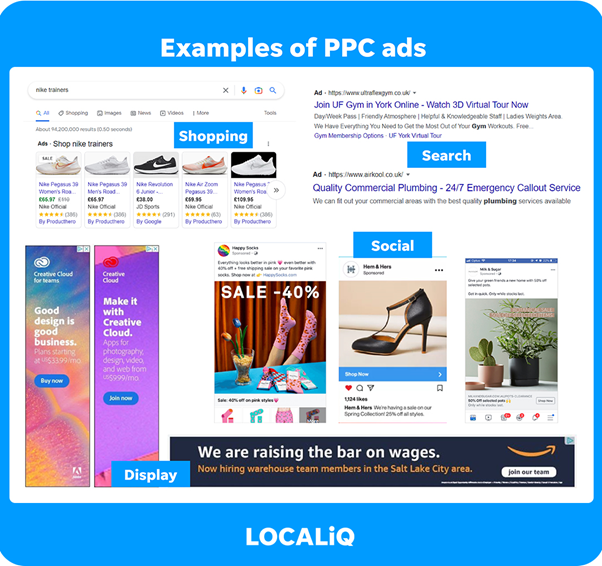
PPC terms you’ll want to know
- Search Engine Marketing (SEM) is one of the main forms of internet advertising. It is the blanket term referring to all marketing methods used to increase the visibility of a website via search engines.
- Search Engine Optimisation (SEO) is the organic effort that goes into marketing through search engines. SEO is a set of rules for optimising your website’s structure and content so that it can achieve high rankings in search engines’ organic results. In simpler terms, SEO is a way to improve your website so that it will appear closer to the top positions in the search results of search engines.
- Keywords “keyphrases” or “search queries” are words or phrases that users type into search engines, such as Google, to find what they are looking for. In terms of SEO, keywords help to define what your content is about so search engines can index and rank it accordingly on search engine results page (SERP). Learn how to conduct effective keyword research.
- Click Through Rate (CTR) is the percentage of users who land on your advertised page because they clicked on your ad (for example if your PPC ad made 100 impressions and 1 click, that’s a 1% CTR). A higher CTR generally means that your ad and keyword relevancy is better than others with a lower CTR. Google will look at your previous CTR and forecast future ones to determine how well your ad matches somebody’s search.
- Quality Score is a score measured on a scale from 1-10 which gives you a sense of how well your ad quality compares to other advertisers. Your Quality Score (QS) is how Google determines how your ad should rank. A higher Quality Score means that your ad and landing page are more relevant and useful to someone searching for your keyword, compared to other advertisers.
- Ad Rank is a value that’s used to determine where ads are shown on a page relative to other ads, and whether your ads will show at all. Ad Rank is essentially your Quality Score times the maximum bid you’ve selected, it is calculated using your bid amount, your auction-time ad quality (including expected click-through rate, ad relevance and landing page experience). Your Ad Rank is recalculated each time your ad is eligible to appear.
- Cost Per Click (CPC) bidding means that you pay for each click on your ads.The CPC is determined by the competitiveness of your keywords, maximum bids and your quality scores.
- Search Volume indicates how many times a certain keyword is searched for within a defined time frame. SEO marketers use this metric to determine how popular and competitive a keyword is. The higher the search volume the more popular the keyword and the higher the Cost Per Click (CPC).
- Keyword Difficulty is an SEO metric that estimates how hard it is to rank on the first page of Google for a given keyword. It is measured on a scale from 0 to 100, the higher the number the harder it is to rank for.
- Domain Authority (DA) measures the probability of an entire web domain to rank in the SERPs. DA works on a 0-100 scale with higher scores indicating stronger ranking potential. Sites with more backlinks and unique referring domains are more likely to have higher DA scores.
- Match Types – A match type determines how closely the keyword matches the user’s search query, so the ad can be considered for auction. There are 3 ad match types: broad match, phrase match, and exact match. Google will automatically default to broad match because this is the most widely used ad match type.
- Ad Groups are a vital part of PPC marketing. They include all ads that share similar targets and are focused on a set of keywords in an ad campaign. When used correctly ad groups can drive traffic and leads to your site at a lower cost, resulting in more conversions.
- Landing Page is a page that a visitor lands on after clicking on a call to action (CTA).
How does PPC work?
Essentially PPC is a business model where marketers pay each time someone clicks on their ad. Similarly to SEM, PPC ads work based on keywords. Advertisers can bid on words or phrases that, when searched, will display their advertisement. The highest bidder then pays the host of the platform when their ad is clicked, this is known as Cost-Per-Click (CPC).
Whenever there is a vacancy for an ad on the SERP, an auction takes place for the related keyword. The CPC is determined by the competitiveness of your keywords, maximum bids and your quality scores. The ad that wins the auction then immediately appears on the SERP.
Best PPC platforms
PPC as a marketing channel covers a number of different ad platforms, with the most common of these being Google Ads, Bing Ads, and Meta Business Manager (Facebook and Instagram Ads).
- Google Ads
Google Ads (formerly known as Google AdWords) is an online advertising platform developed by Google, where advertisers bid on keywords to display their advertisements, service offerings, product listings, or videos to internet users.
There are over 5 billion search queries made on Google every day, making it one of the most powerful platforms for paid advertising. Through the platform, you can advertise to the Google Display Network and the Google Search Network which connects your offer with your target audience through multiple channels and placements, creating a positive experience for your prospects.
- The Search Network enables marketers to create text ads which appear on the search engine results page (SERP). These ads are displayed above or below search results on Google Search, or besides, above or below search results on Google Play, the Shopping tab, Google Images, Google Maps and the Maps app.
- The Display Network enables marketers to create display ads to appear on a group of more than 2 million websites, videos, and apps across the internet including Google Finance, Gmail, Blogger and YouTube.
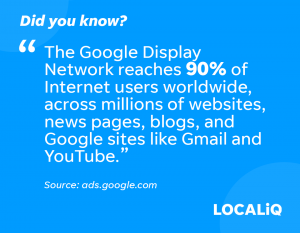
Get started setting up your Google Ads with LOCALiQ’s complete guide to Google Ads.
- Bing Ads
Bing Ads, also known as Microsoft Advertising, lets you run ads on Bing, as well as on Yahoo and AOL. The platform works very similar to Google Ads, however there is substantial difference in market size and potential reach.
With an average 86–96% market share worldwide, Google is the king of paid advertising. Nevertheless, compared to Google Ads, Bing Ads offer a lower CPC at the expense of a larger audience. The average cost-per-click on Microsoft Advertising can be up to 70% lower compared to Google Ads.
Although Google dominates the search engine market, the Microsoft Search Network is growing rapidly. There are over 626 million monthly searches conducted through the Bing Network from the UK alone. More importantly, Microsoft Ads reach 63 million searchers that can’t be reached through Google Ads, proving it is still a platform worth investing in.
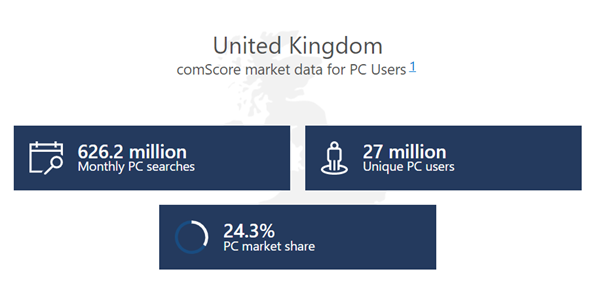
- Meta Business Manager (formerly known as Facebook Ad Manager)
The Meta Business Manager (or Meta Business Suite) platform enables marketers to oversee all Facebook Pages, Instagram accounts and business assets in one place. From the dashboard you can create or schedule posts, stories and ads for your business, and you’ll find helpful insights to optimise your campaign as you go.
Meta is popular and effective platform for paid ads due to its wide audience reach and detailed targeting options. Similar to Google Ads, you can target Facebook ads to specific users, at an incredibly granular, and detailed level. Furthermore, the Meta Business Suite platform has a range of features and analytical tools to help you optimise ads and monitor campaign performance.
Check out our comprehensive guide to target audiences and set up ads on Facebook.
Within each of these platforms are different ad formats to choose from, including:
- Search Ads
- Shopping Ads
- Display Ads
- Video Ads
- Gmail Ads
- Single Image Ads
- Carousel Ads
The basic principles of PPC remain largely unchanged regardless of the platform and ad format chosen:
- Create or sign into an advertising account with the chosen
- Build the ads (select relevant keywords, target audiences, ad copy and images, etc.)
- Decide how much you are willing to pay for each click and set a budget.
- After you set the campaign live your ad goes into an auction with others targeting the same keywords. The auction will determine when and which order the ads are displayed.
- Whenever someone clicks your ad, you pay (CPC).
Advantages and disadvantages of pay-per-click advertising
There are many benefits to using PPC, you can generate quality leads, find out more about your audience and increase your online visibility to make your business stand out. However, paid advertising does have its limitations and risks.
Understanding the capabilities and limitations of PPC advertising will help you create a search campaign strategy that meets your business’s objectives.
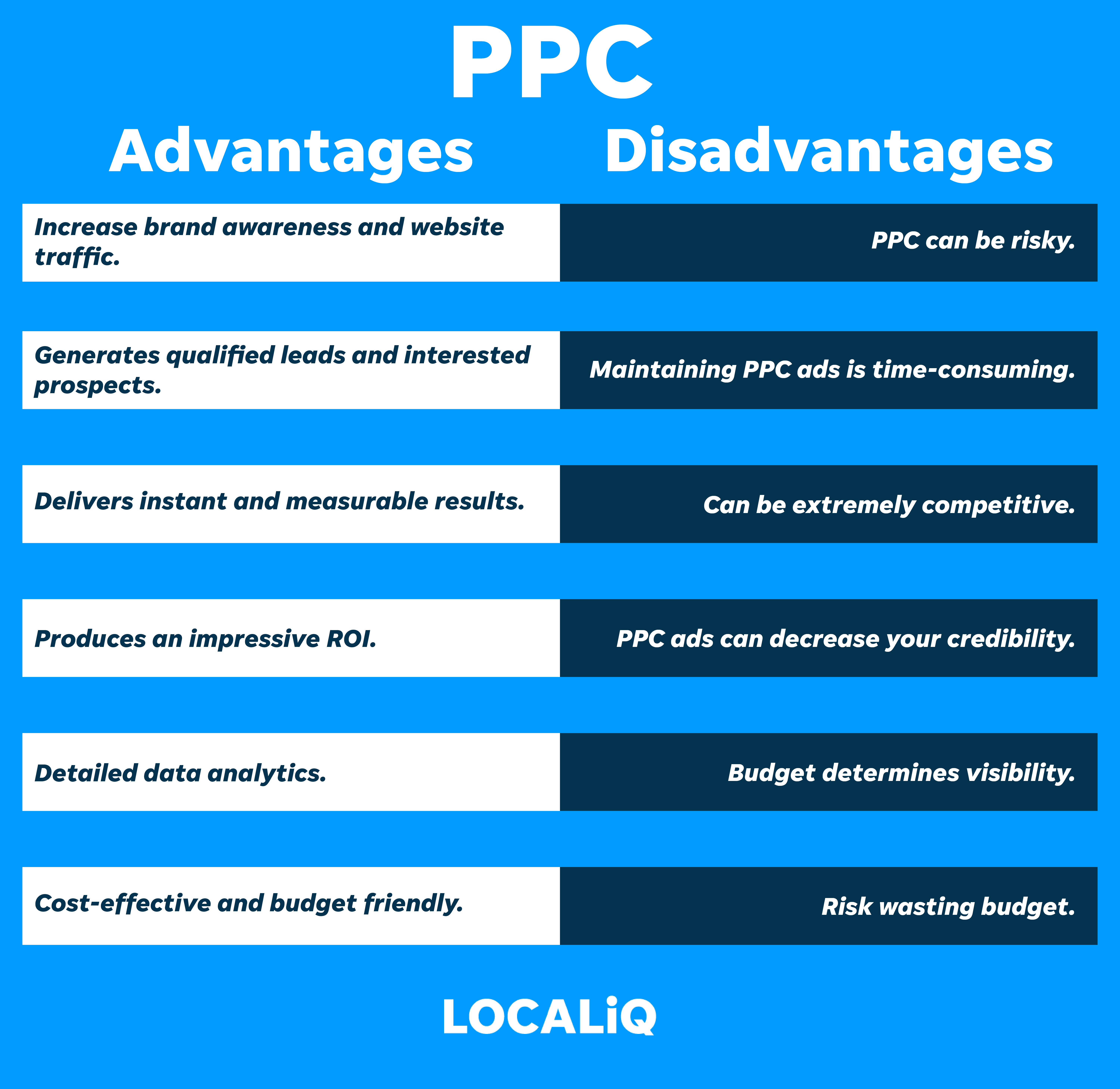
Advantages of PPC advertising:
- Increase brand awareness and website traffic
You can showcase your paid ads on multiple different sites and networks giving you more website traffic. If you have an online business, paid advertisements are an extremely powerful way to gain customers and generate qualified leads. Furthermore, showing your ads at the right time and at the right place can be extremely beneficial.
- Generates qualified leads and interested prospects
The purpose of a PPC campaign is to attract qualified users to your website and get them to take an action (e.g., make a purchase, fill out a form, get in contact). PPC does not just generate leads and revenue, it also informs businesses where to strategically place adverts to reach the people who are most likely to convert.
- Global reach
Search engine and social media platforms offer geotargeting, providing advertisers with local and global reach on their PPC advertisements allowing them to reach users living in a specific and relevant area(s).
- Delivers instant and measurable results.
Paid ads are extremely time efficient; they can be set up in under an hour and your listing will immediately be displayed in the sponsored results. Typically paid search advertising generates very quick results which explain why it is often used by marketers. Unlike organic search, paid search can drive a high number of visitors to your site in a very short amount of time provided your ads are optimised to reach your target audience.
- Produces an impressive return on investment (ROI)
Google Economic Impact estimates that for every $1 a business spends on Google Ads, they receive $8 in profit through Google Search and Ads (which works out to about £6.55 profit for every £0.820 spent).
- Detailed data analytics
PPC lets you access big data. You can track all your results and monitor campaign performance using tools such as Google Analytics. Search engine and social media platforms offer conversion tracking and detailed data analytics so that you can monitor PPC ad performance in real time and gather information about the users engaging with them. This can be a useful tool for building up a more comprehensive picture of your target customers as part of a long-term marketing effort.
- Cost effective and budget-friendly
Since you pay when a user reaches your website, PPC is cost-effective. You can tailor paid campaigns based on how much you’re willing to spend overall. You can set a maximum budget to make sure you don’t overspend on the keywords you choose to bid on, and only pay when someone clicks on your advert or search link.
Disadvantages of PPC advertising:
- PPC can be risky.
Traffic can be inconsistent, and clicks don’t guarantee sales.
- Maintaining PPC ads is time-consuming.
You need to invest time into optimising and improving to get the best results. It requires skills to set up effective campaigns. Often businesses will choose to use a specialist agency.
- Can be extremely competitive
Due to the nature of search engines, users are exposed to a lot of options for the same product, so you can be easily compared to your competition. Additionally, for some industries, paid search can be extremely competitive because certain keywords are like gold dust in terms of their potential to drive engagement and therefore have high cost-per-click.
- PPC ads can decrease your credibility
Consumers are becoming more reluctant to click on paid ads because they are more inclined to trust organic results. Most users are aware that paid ads are ranked high on the SERP because a company is paying for them to be there and will purposely skip the paid results until they find the first organic results.
- Budget determines visibility
With paid advertisements, once your money runs out your link will no longer be displayed at the top of the search results.
- Risk wasting budget
Marketing budgets can easily be wasted when audience settings, keyword selection, and goal tracking are done incorrectly.
Differences between PPC and SEM
You have probably heard the terms SEM and PPC used interchangeably, we often get asked if they are the same. Despite their similarities, they are slightly different.
- SEM and PPC are paid initiatives through search and other platforms.
- SEO is the organic effort that goes into marketing through search engines.
The term ‘SEM’ refers to search engine marketing, which is the blanket term referring to all marketing methods used to increase the visibility of a website via search engines. SEM covers more than just paid marketing, it is both paid and unpaid, PPC, or organic traffic. Basically, any marketing technique carried out on a search engine (including SEO and PPC) is considered SEM.
On the other hand, PPC is an advertising model that uses sponsored listings and adverts to drive traffic to a website (making it an SEM technique). This form of advertising is most closely associated with Google, however, unlike SEM, PPC works with search engines and other channels such as video ads on YouTube and visual ads on social media.
SEM vs PPC: What is the Difference?
Get started with PPC
Ready to get started with PPC? Learn how to set up a Google Ads account here.
8 steps to successfully launch a PPC campaign
1. Set a goal for your PPC campaign
All campaigns need a goal so you can actively track and monitor their performance and adjust accordingly. You need a clear objective, such as generating leads, increasing website traffic or boosting conversions. Remember that these goals need to be specific and timely.
2. Analyse keywords
There are many kinds of keywords that you can use in your PPC advertising strategy, however, keywords don’t come cheap. Check out the 20 most expensive keywords in Google Ads.
If you are paying high CPC you want to make sure that it is worth it. An effective keyword tool can help you select keywords likely to drive sales or conversions that aren’t overly expensive.
Free SEO keyword tools you can use:
- Keywords Everywhere– A free plug-in for Chrome & Firefox that shows search volume, search difficulty, suggested keywords and competition on multiple websites.
- Moz Search Bar– A free Chrome Extension that makes it easy to get link metrics and do all your SEO on the go.
- SEO quake– A free add-on that provides you with key SEO metrics, along with other useful tools such as SEO Audit and many others.
Learn everything you need to know about conducting effective keyword research.
3. Choose your match type
Keyword match types tell Google how aggressively or restrictively you want to match your advertisement to user search queries.
There are 3 main keyword match types:
1. Broad match is the default match type and the one that reaches the largest audience. With this match type your ad will appear if a user’s search query is in some way related to your keyword.
Note: It’s important to be careful with broad match types, although they are terrific for driving lots of clicks, you must watch the search query reports to ensure that you’re not paying for irrelevant traffic. Use broad match if the goal of your PPC campaign is to bring in the maximum amount of traffic to your landing page.
2. Phrase matchis the middleman between broad match and exact match, offering some of the versatility of broad match, but with a higher level of control. Your ad will appear if the users search query includes the keyword phrase, even if there are words before or after it.
3. Exact match is the most specific and limiting of the keyword match types. With this match type, your paid search ad will only appear if the users search query exactly matches your keyword phrase.
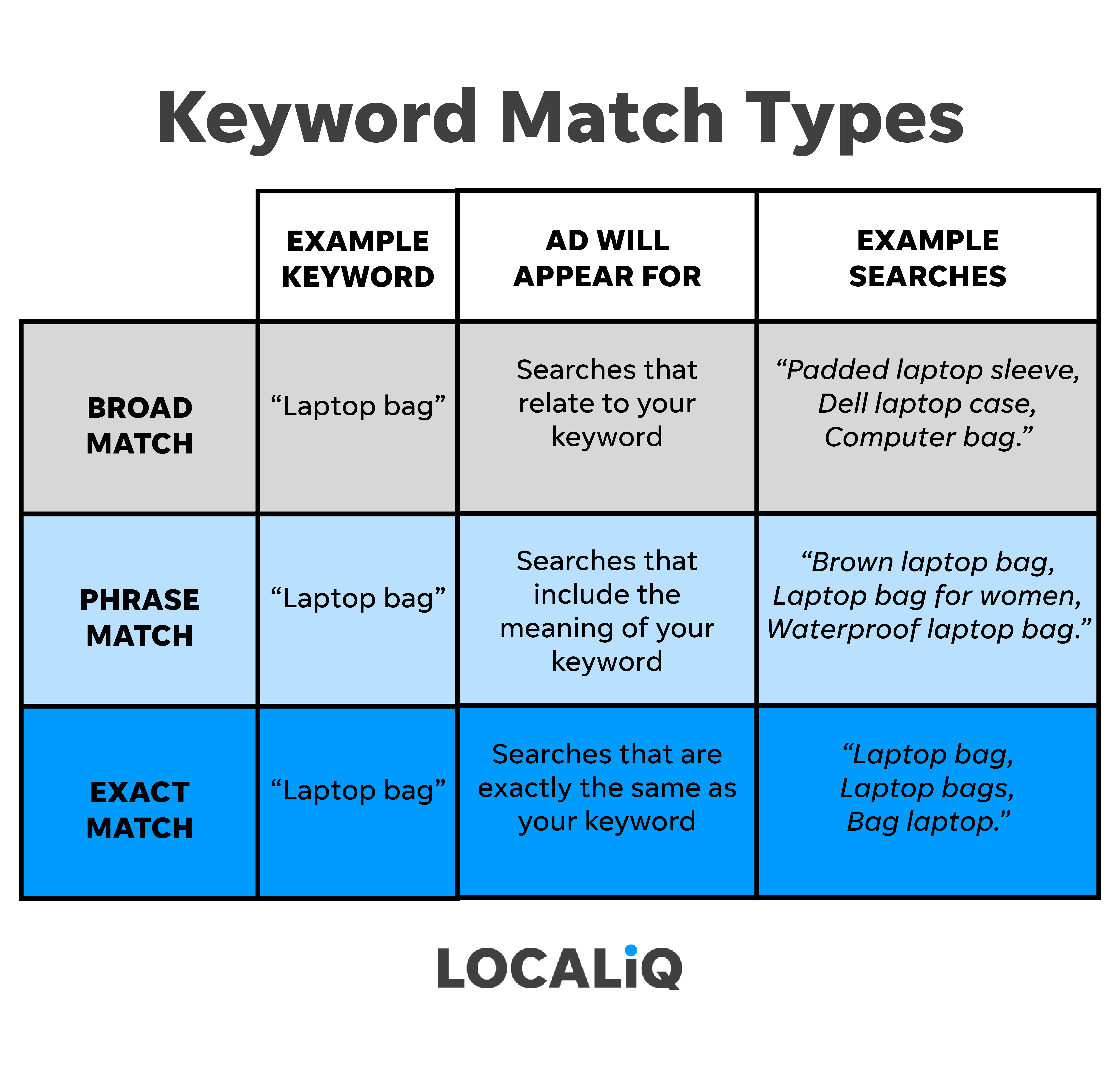
4. Create your ads
Once you have established your goals, keywords and their match types, you are ready to begin creating your paid search ads. Here are some guidelines to keep in mind when writing your ads.
PPC search ads have four primary elements:
- Headline 1 allows for up to 30 characters.
- Headline 2 allows for up to 30 characters.
- Display URL
- Description allows for up to 80 characters.
PPC social ads have three main elements across all ad types:
- Headline
- Description (optional).
- Primary text (You can add multiple text options and the platform will show one of them to each person, based on what they’re most likely to respond to).
For the specific text and design recommendations for different ad types read our blog.
To make the most of the limited ad space, make sure your copy does the following:
- Speaks directly to your target audience.
- Includes an appealing offer.
- Uses the main keyword that you’re bidding on.
- Provide an actionable CTA so the searcher knows what to do next.
- Use language that aligns with your landing page copy.
5. Focus on the language of your PPC copy
You text ad copy needs to be clear, descriptive, relevant, and persuasive.
Here are top tips for writing PPC text ads:
- Target around 3-5 specific keywords that are relevant to your organisation and industry sector.
- Implement a keyword tool to help you identify the best keywords for your business.
- Use descriptive words in your PPC ads to truly depict your business and set you apart from your competitors e.g., ‘innovative’ ‘modern’ ‘adaptable’.
- Include specific CTAs. For example, if you want your customers to download your content include ‘Download now’ CTA in your ad.
- Think about your user and the information they are looking for, and incorporate that into your text ad. What differentiates you from your competition? Do you offer any specialist products or services?
6. Use Ad Groups
Ad Groups or ad sets are a vital part of PPC marketing. They include all ads that share similar targets and are focused on a set of keywords in an ad campaign. When used correctly ad groups can drive traffic and leads to your site at a lower cost, resulting in more conversions.
You want to use ad groups to organise your ads by a common theme. For instance, you can create ad groups based off your campaign objective, campaign audience or the products and services you offer. Moreover, you can conduct A/B testing to compare ad sets and see which is performing better.
7. Optimise paid ads for mobile
Mobile devices tend to have different user behaviour and search intent than desktop and tablet devices. So, you may be ranking well on desktop but not even appear on the first page of results on mobile. This means you must consider optimising your paid search ads for mobile use – not doing so will actually be detrimental to your marketing efforts!
Top Tip: Keep an eye on how your site is performing on mobile by regularly reviewing your Google Analytics dashboard and frequently running a mobile site speed test.
8. Be strategic with budget
PPC campaigns can get very expensive if they aren’t set up right. To minimise the risk of wasting your budget, you can set a maximum bid cap. You set this bid as the maximum amount to tell Google how much you’re willing to pay when someone clicks on your ad.
There are various other bidding strategies that you can use to control the spending of your budget. Look at the pros and cons of each bidding strategy and select the most appropriate for each campaign.
Find out how to successfully launch and manage a paid search campaign.
At LOCALiQ we take the time to understand your business, creating the most cost-effective paid advertising campaign for your budget – ensuring your paid ads appear in front of the right people.
Our team of digital marketing specialists provide you with expert marketing support – from PPC campaign management and professional SEO and content marketing services, to paid social, digital display advertising and much more.
Get in touch to find out how to get the best results from your campaigns.






